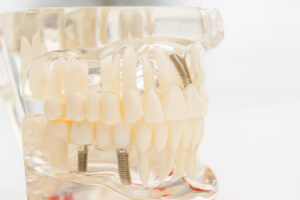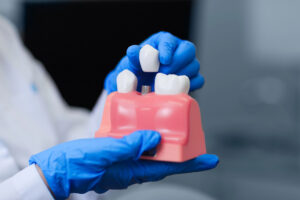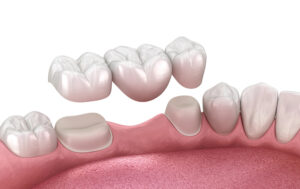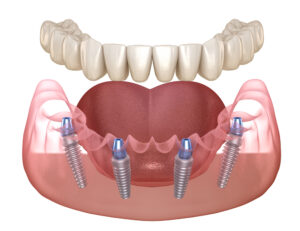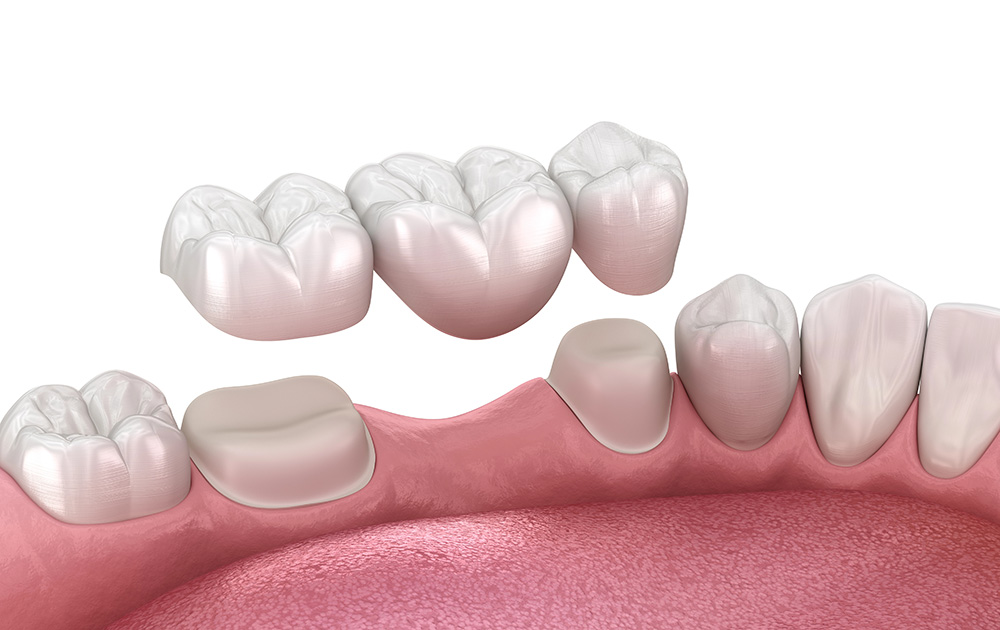
In the world of restorative dentistry, dental crowns and bridges play a pivotal role in enhancing both the aesthetic appeal and functionality of the teeth. These dental restorations are not only essential for improving the appearance of a damaged or missing tooth but also crucial for maintaining oral health, preserving bite alignment, and preventing further complications.
Whether you’ve lost a tooth due to injury, decay, or wear, or have a weakened tooth that needs reinforcement, crowns and bridges offer a reliable, long-lasting solution that combines strength and beauty.
What Are Dental Crowns and Bridges?
A dental crown is a tooth-shaped cap that is placed over a damaged or weakened tooth to restore its shape, size, strength, and appearance. Crowns are commonly made from porcelain, ceramic, metal, or a combination of materials and are customized to match the color and shape of your natural teeth.
A dental bridge, on the other hand, is used to replace one or more missing teeth by anchoring artificial teeth (pontics) to the adjacent natural teeth or implants. The adjacent teeth, called abutments, are typically fitted with crowns to hold the bridge in place securely.
Together, crowns and bridges help restore a full, healthy-looking smile while addressing underlying dental health issues.
Cosmetic Benefits of Crowns and Bridges
1. Restoration of Natural Appearance
One of the most immediate and noticeable benefits of dental crowns and bridges is their ability to restore the natural look of your smile. These restorations are designed to blend seamlessly with your existing teeth in color, shape, and size. Porcelain and ceramic options, in particular, offer a translucent finish that mimics natural tooth enamel.
2. Improved Self-Confidence
A missing or damaged tooth can make many people feel self-conscious when smiling or speaking. By filling gaps or covering unsightly teeth, crowns and bridges can boost your confidence, allowing you to interact more comfortably in social and professional settings.
3. Enhanced Facial Aesthetics
Missing teeth can lead to sagging facial muscles and premature aging. Dental bridges fill in the gaps, helping to maintain facial structure and providing a more youthful appearance.
Functional Benefits of Crowns and Bridges
1. Restoration of Chewing and Speaking Ability
When teeth are missing or damaged, everyday tasks like eating and speaking can become difficult or uncomfortable. Dental crowns and bridges help restore proper function, allowing you to chew food effectively and speak clearly.
2. Protection of Weak or Damaged Teeth
Crowns are often used to protect a tooth that has undergone root canal therapy or has a large filling. By covering the tooth, the crown provides structural support and prevents further damage or breakage.
3. Prevention of Tooth Shifting
When a tooth is missing, the surrounding teeth may begin to shift out of alignment, leading to bite issues and increased wear. Bridges help maintain proper spacing and alignment by keeping adjacent teeth in their correct position.
4. Long-Term Oral Health Maintenance
By addressing gaps and weakened teeth early, crowns and bridges can prevent more serious complications down the line, such as jawbone deterioration, gum disease, or temporomandibular joint (TMJ) disorders.
Oral Care After Cosmetic Procedures
Proper oral care after cosmetic procedures is essential to ensure the longevity of crowns and bridges and maintain overall dental health. While these restorations are durable, they still require regular maintenance and attention.
Here are some key tips:
1. Maintain a Consistent Oral Hygiene Routine
Brush at least twice a day with a fluoride toothpaste and floss daily to remove plaque and food particles around the crowns and bridges. Special floss threaders or interdental brushes can help clean around bridgework more effectively.
2. Schedule Regular Dental Check-Ups
Routine visits to your dentist every six months (or as recommended) will help catch potential issues early and ensure that your restorations remain intact and functional.
3. Avoid Hard or Sticky Foods
While crowns and bridges are strong, chewing hard items like ice or hard candies, or sticky foods like caramel, can dislodge or damage them. Be mindful of your eating habits, especially in the initial days after placement.
4. Wear a Night Guard if Needed
If you grind your teeth at night (bruxism), your dentist may recommend a custom night guard to protect both your natural teeth and your restorations.
5. Watch for Warning Signs
Sensitivity, discomfort, or a loose crown or bridge may indicate an issue. Don’t ignore these symptoms—consult your dentist promptly for evaluation and adjustment.
Dental crowns and bridges are not only valuable tools for restoring dental function but also powerful cosmetic solutions that can transform your smile and improve quality of life. Whether you’re seeking to replace missing teeth, protect weakened ones, or enhance your appearance, these restorations offer a durable, aesthetic, and practical option.
However, to make the most of your investment in restorative dentistry, diligent oral care after cosmetic procedures is vital. With proper hygiene, regular dental visits, and mindful habits, your crowns and bridges can provide many years of confident smiles and healthy function.
